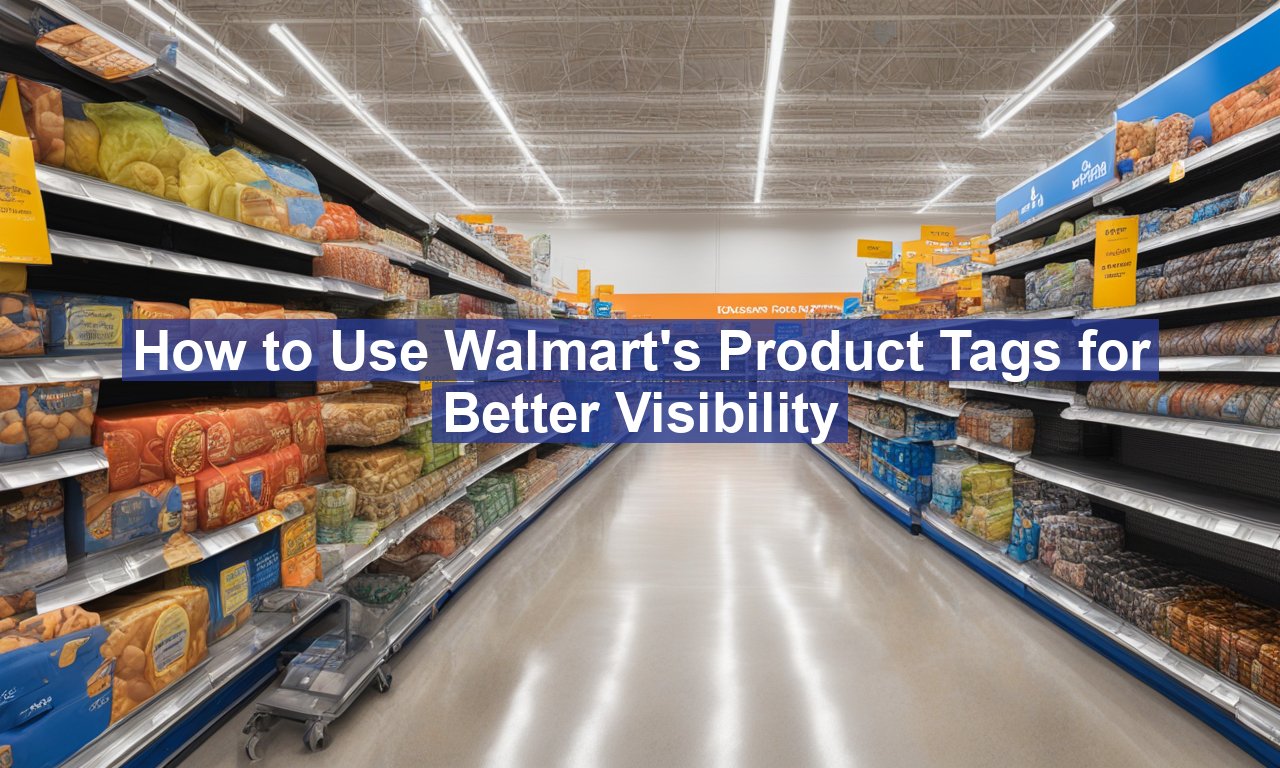How to use Walmart’s product tags for better visibility, In the bustling world of retail, getting products noticed can often feel like a grueling task. Enter Walmart‘s product tags, a strategic tool designed to enhance product visibility on the platform. If you’re aiming to make your products pop and stand out among the plethora of choices available, understanding and utilizing these tags effectively can be your game-changer.
This article delves into the nitty-gritty of Walmart’s product tags, offering insights and practical tips that can help your products shine brighter than ever.
How to Use Walmart’s Product Tags for Better Visibility Step-by-Step Guide
What are Walmart’s Product Tags?
Simply put, Walmart’s product tags are descriptive labels that provide additional context to your products on the online marketplace. Think of them as digital signposts, helping customers understand what your item is all about and why they should consider purchasing it over others.
Why Are Product Tags Important?
With countless products vying for attention, a smart tagging strategy is imperative. Here’s why they matter:
- Enhanced Searchability: Correct tags make it simpler for your products to appear in search results, aligning with customer queries and enhancing discoverability.
- Improved Customer Experience: Tags provide crucial product details, improving the shopping experience and aiding decision-making.
- Competitive Advantage: Properly tagged items stand out, offering you an edge over competitors with lackluster descriptions.
How to Effectively Use Walmart’s Product Tags
- Understand the Fundamentals
Your first step should be understanding how these tags work within Walmart’s system. Tags are aligned with the product’s attributes, like size, color, material, or special qualities (e.g., organic, gluten-free). Ensure these attributes are precisely listed to capitalize on searchable terms. - Conduct Keyword Research
Keywords can be the magic bullet for maximizing visibility. Conduct comprehensive keyword research to discover what terms your potential customers are using. Tools like Google Keyword Planner or SEMrush can be invaluable resources to identify high-volume search terms specific to your niche. - Use Descriptive and Specific Tags
Be specific. Instead of just tagging your product as “t-shirt,” add attributes like “cotton,” “v-neck,” or “graphic print” that resonate with customer search queries. Specific tags help the algorithm place your product in front of the right audience, improving the likelihood of conversions.
Common Tagging Mistakes to Avoid
- Being Overly Generic
Avoid generic tags that don’t offer additional information. Overly broad tags can throw your product into the depths of search results, overshadowed by more precise listings. - Too Many Tags
More isn’t always better. Cramming too many tags can dilute their effectiveness, potentially confusing both the algorithm and your potential customers. Focus on a balanced, targeted set of descriptors that encapsulate your product’s core qualities. - Ignoring Seasonal Trends
Pay attention to seasonal trends and incorporate relevant tags. If you’re selling winter coats, tagging with seasonal keywords like “winter,” “warm,” or “cozy” during colder months can make a significant difference.
Optimizing Your Product Listings with Tags
Here are some practical steps to optimize your product listings using tags:
- Utilize Advanced SEO: Apply SEO principles to your tag selection. Use natural language and align your tags with the ways real people search, ensuring they are also present in your product descriptions.
- Regularly Update Tags: Keep your tags current by revisiting and revising to reflect evolving trends, customer preferences, and any changes to your product lineup.
- Ensure Consistency: Maintain consistency across all product listings to reinforce brand image and help customers associate your products with specific keywords.
Leveraging Walmart Analytics
Walmart provides sellers access to performance analytics. Thoroughly analyze these reports to understand which tags work effectively for your products and which don’t, allowing continual optimization of your strategy. Additionally, Walmart’s analytics can give insights into customer behavior and provide valuable data to refine your approach further.
A Final Word on Walmart Product Tags
By how to use Walmart’s product tags for better visibility tagging system, you’re not just enhancing your product’s searchability—you’re engaging potential buyers right at the start of their online shopping journey. It’s about creating a comprehensive and smooth experience that takes them from search to purchase with ease.
Remember that Walmart is a dynamic and competitive marketplace. Adapting and refining your strategy based on insights from analytics and evolving customer preferences will help you maintain an edge over competitors. For further reading on optimizing your e-commerce strategy, you might find this guide on eCommerce trends particularly useful. Good luck, and may your products always be the first to catch your customer’s eye!


